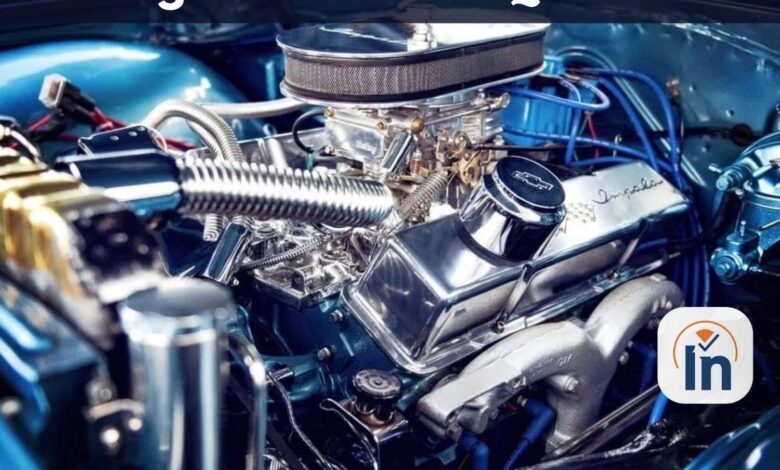30+ Most Asked IC Engine Interview Questions To Crack Your Interview

Are you looking for a career that will last a lifetime? IndisJob is a great place to start your career. There are many opportunities for your talent and skills to advance your career. These are the top internal combustion engine jobs that are available for engineers.
You can show off your technical skills while also showing your practical abilities. This job is for skilled people. People should do their best and then get on with the job to secure a good career. Next, go for an interview with high-end abilities.
Most Asked IC Engine Interview Questions
Here we are going to share 30+ most asked IC Engine Interview Questions which will help you to crack your IC Engine Interview easily.
1) What is an Internal Combustion Engine?
An internal combustion engine is a heat engine where the combustion of fuel takes place with an oxygenized (air). This engine uses both the reactant (fuel) and the product (air) as the working fluid. The engine gets its energy from the heat produced by the combustion of fluid. The hot gaseous product from combustion heats a piston, turbine blade, and nozzle. It is the most commonly used form of heat engine and is widely used in cars, boats, trains, aircraft, and other vehicles.
2) What are some of the benefits of internal combustion engines?
Internal combustion engines offer many benefits. These are just a few:
1. This engine is much smaller than an external combustion engine. These engines are very powerful and light.
3. This engine is ideal for applications that require low power.
4. These engines are lighter than the external combustion engine and more portable.
5. They are extremely safe to use.
6. It takes very little time to get started.
7. These engines are more efficient than the equivalent external combustion engine.
8. An internal combustion engine is impervious to fluid leakage.
9. Internal combustion engines require less maintenance.
10. External combustion engines consume more lubricant than this engine.
3) What are the limitations of the internal combustion engine?
Each coin has two sides. The internal combustion engine is a dual-faced coin. Below are some limitations to the internal combustion engine:
1. Fuel can only be used if it is a high-quality liquid or gaseous fuel.
2. These engines use a lot of expensive fuel.
3. The emission levels are generally higher than those of an external combustion engine.
4. It can’t be used to generate large amounts of power.
5. A lot of noise is produced by the explosion of fuel.
4) What is the compression ratio of the I.C. engine?
The compression ratio in an internal combustion engine can be described as the ratio between the volume of the cylinder (when it is closest to the head of the cylinder) or the combustion chamber (when it is further out). The compression ratio is a measure of how compressed the air in the cylinder is. Engines use tightly compressed air because it produces a strong explosion from the mixture of air and fuel which makes more fuel. This technique is used by automotive engineers to create engines that are efficient in fuel consumption.
- Top 20 Most Asked Concentrix Interview Questions & Answers
- Policy Bazaar Interview Questions & Answers
- Top 10 Python Flask Interview Questions
- Best Web Developer Interview Questions & Answers
5) What is a carburetor engine?
The carburetor in an internal combustion engine is used to mix the fuel and air for spark ignition. There are many components to the carburetor, including a choke and storage chamber for liquid fuel. The main jet, accelerator pump, main jet, main jet, and venturi-shaped airflow restriction. This is only used in engines that can spark ignition, such as a Petrol engine.
6) What are Engine Pistons and How Do They Work?
The piston is a cylindrical component that moves in engines due to the combustion forces. The piston is the movable end in the combustion chamber, while the cylinder head acts as a stationary end. Most pistons are made of cast aluminum alloy, which provides excellent thermal conductivity and lightweight.
7) What are the types of internal combustion engines?
There are many types and models of Internal combustion engines. Below are some of the most important types:
Based on the fuel used
- Diesel Engine
- Petrol Engine (or gasoline engine)
Based on strokes per cycle
- Two-stroke engine
- Four-stroke Engine
Based on the type of ignition
- Spark Ignition Engine. Engine)
- Compression-Ignition Engine. Engine)
Based on the arrangement of valves
- L-head Engine
- I-head Engine
- T-head Engine
- F-head Engine
Based on the type of cycle
- Otto Cycle Engine
- Diesel Cycle Engine
- Dual Cycle Engine
Based on the cooling system used
- Air-cooled Engine
- Water-cooled Engine
Based on the application
- Automobile Engine
- Aircraft Engine
- Locomotive Engine
- Marine Engine
- Stationary Engine
This is just a small selection. There are many other types of Internal combustion engines that can be used in different applications.
9) What is Combustion modeling?
For a better understanding and prediction of internal combustion engine performance and emissions, combustion modeling is one of our most important tools.
10) What is a valve timing diagram?
The valve timing diagram is a 360-degree figure that represents the opening and closing valves of the engine. This in turn is dependent on the movement of the piston from TDC or BDC. The valve timing graph is a representation of the relationship between piston and valve. It can be controlled by drawing a graph between them. Below is the diagram.
11) Explain Spark ignition engines?
This refers to the combustion of the air-fuel mixture when it is ignited by a spark from a sparkplug. This term is used for petrol engines and not diesel engines where the ignition process doesn’t require an external spark.
12) What is a crankshaft?
The engine’s functioning is controlled by the crankshaft. It converts the piston’s linear motion to rotational motion.
The crankshaft is subject to a high cycling load. It is important that it has high fatigue strength. Also, it should be resistant to wear for the long term.
13) Explain the purpose of the Flywheel?
Flywheel’s main purpose is to store rotational energies. The square of the Flywheel’s rotational speed is directly proportional to the amount of energy it stores. Flywheel has two main functions: to provide continuous energy if the source of energy is not available and to deliver energy at an earlier rate.
A flywheel, for example, maintains the constant angle velocity of the crankshaft when it is in an engine that goes back and forth. When torque is applied to it by a firing piston it stores energy. The piston then compresses the fuel and fresh air and releases that energy to the crankshaft.
14) What is scavenging exactly?
Scavenging is the process of replacing the exhaust gas with a fresh fuel mixture or air in a cylinder. To maximize power output, it is important to perform scavenging because exhaust gases can lead to improper combustion.
15) What is an indicator diagram?
James Watt and John Southern developed the indicator diagram. It shows the pressure change and volume in a cylinder for a back-and-forth engine. This diagram can be used to calculate power and work in an engine cylinder. It aids the engineer in optimizing steam engines.
16) What is the flame front?
The combustion reaction occurs in a specific region of space. This region is known as the flame front. This is the area where the fuel mixture and the combustive are more precisely mixed. The speed at which the flame front moves can determine whether an explosion is a deflagration or a detonation. Because the flame front is very small, the flames can reach temperatures up to several thousand degrees.
17) What is ignition delay in SI Engine?
Ignition delay, also known as ignition delay, is the time between ignition and passage of spark.
18) What is a 2-stroke IC Engine Engine?
Two-stroke engines require two-piston movement (one cycle) in order to produce power. This engine produces power even if the exhaust and intake gases are both at the same moment. The valve can be opened and closed by pressure change (for intake stroke). This engine allows for smoother strokes by allowing oil to be mixed with fuel.
19) What is the fuel used in IC Engines’ combustion?
IC Engines use the following fuels:
1. For the internal combustion engine with spark ignition, gasoline is used.
2. Diesel fuels can be used to power internal combustion engines that are compression-ignition.
3. Shipping uses marine fuels.
4. For aviation turbines, fuels for the aircraft turbine are used.
20) What is ATFT Technology in Honda Hunks?
ATFT stands to stand for Advanced tumble induction technology. This technology creates a tumble effect in the air-fuel mixture, which improves fuel efficiency.
ATFT creates a spinning motion in the air-fuel mixture, which results in better mixing. Mixing these components better results in more efficient fuel burning and lower emissions.
21) What is a 6 stroke engine?
Six-stroke engines are modified or updated engines that aim to improve the performance of the four-stroke and two-stroke engines. These can be applied to internal combustion engines.
A six-stroke engine has many benefits, including:
It improves fuel efficiency.
It reduces the mechanical complexity.
It decreases efficiency.
Follow Us On Facebook, Instagram & LinkedIn for the latest updates.







